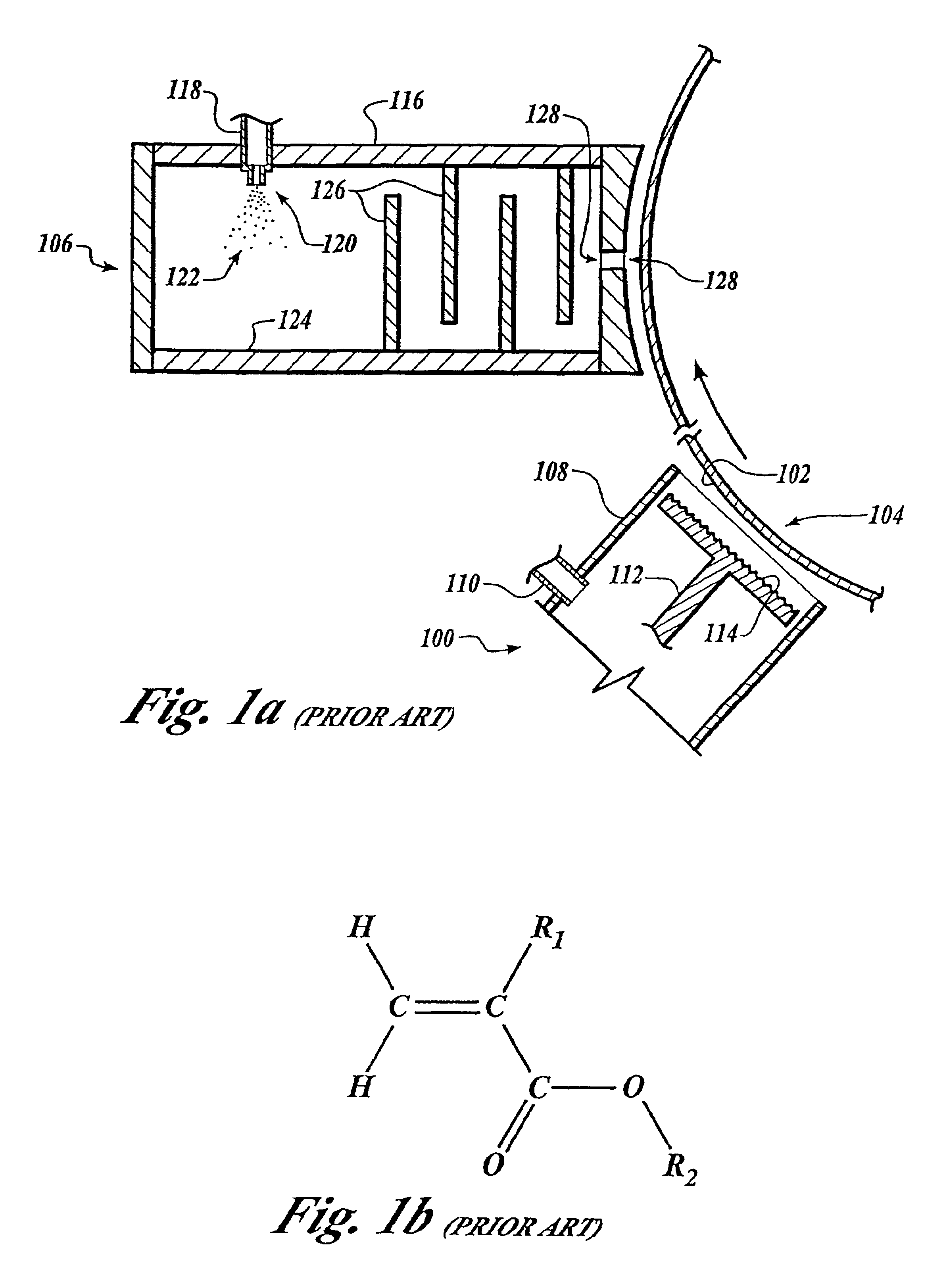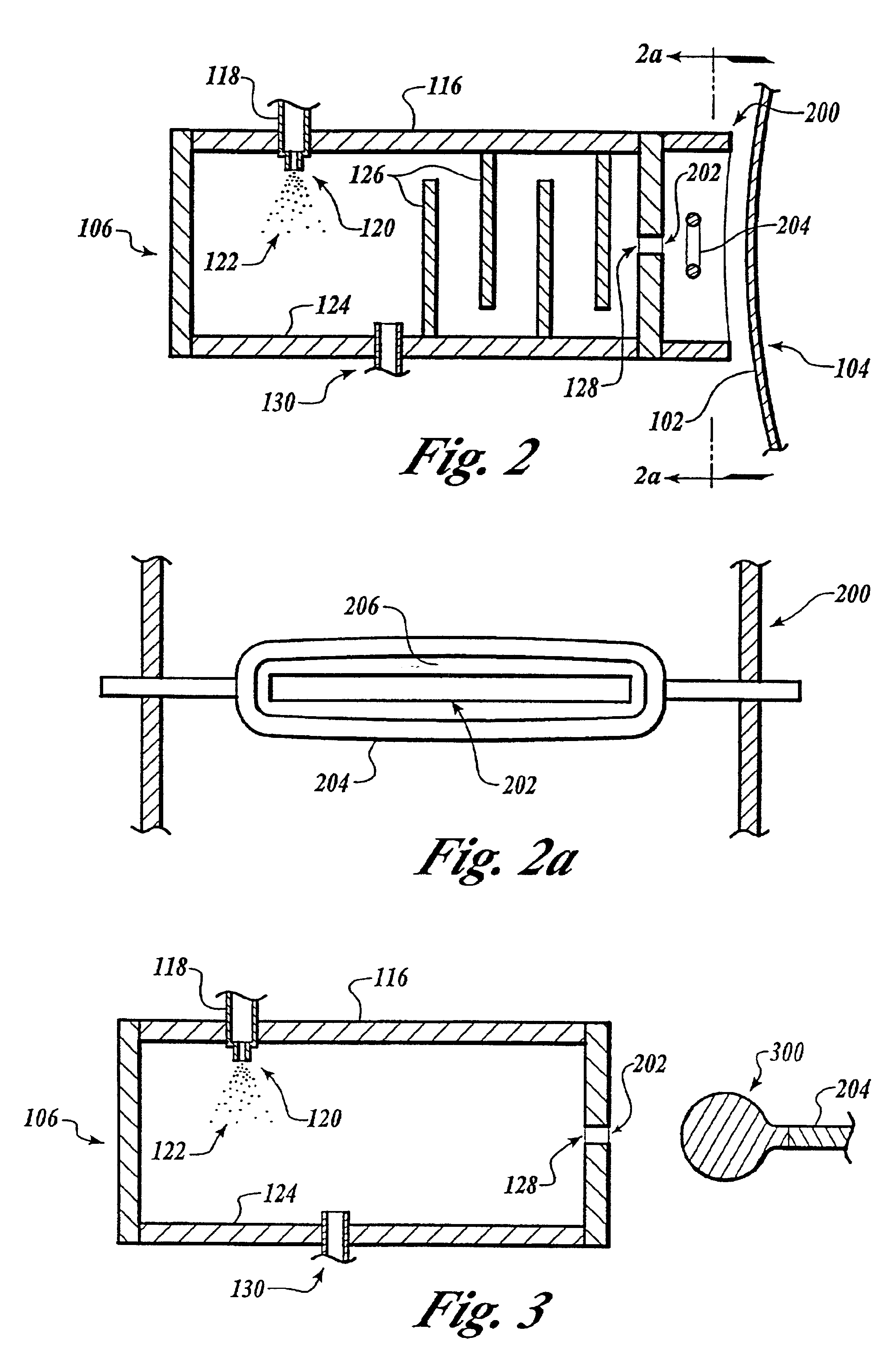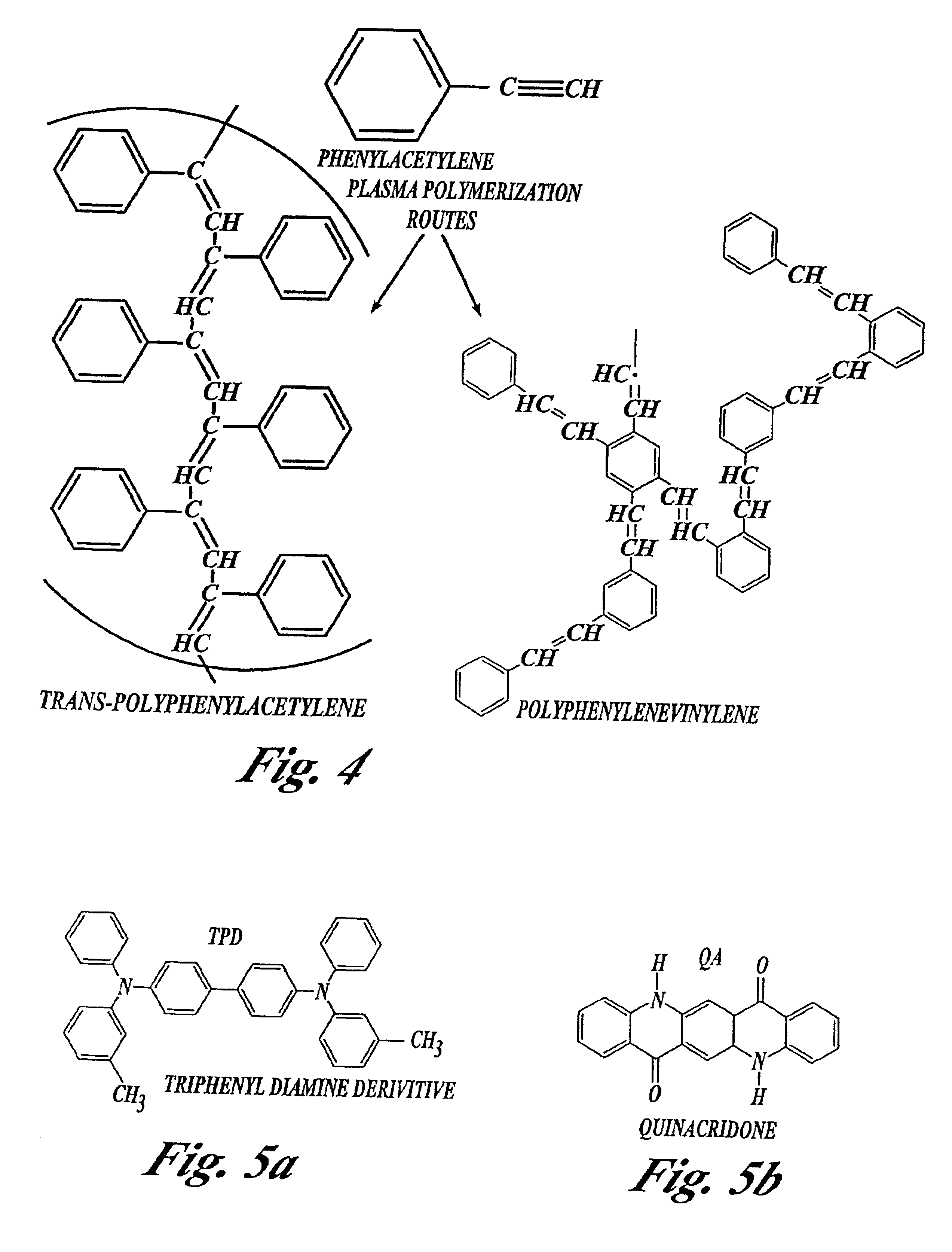Plasma enhanced chemical deposition for high and/or low index of refraction polymers
a technology of refraction polymer and enhanced chemical deposition, which is applied in the direction of coating, chemical vapor deposition coating, and plasma technique, etc., can solve the problems of difficult control of metering of gas, low deposition rate, and two sequential steps, and achieve enhanced chemical vapor deposition
- Summary
- Abstract
- Description
- Claims
- Application Information
AI Technical Summary
Benefits of technology
Problems solved by technology
Method used
Image
Examples
Embodiment Construction
An apparatus which can be used in the method of the present invention is shown in FIG. 2. The method of the present invention may be performed within a low pressure (vacuum) environment or chamber. Pressures typically range from about 10−1 torr to 10−6 torr, although higher or lower pressures can be used. The flash evaporator 106 has a housing 116, with a polymer precursor inlet 118 and an atomizing nozzle 120. Flow through the nozzle 120 is atomized into particles or droplets 122 which strike the heated surface 124 whereupon the particles or droplets 122 are flash evaporated into a gas or evaporate that flows past a series of baffles 126 to an evaporate outlet 128 and cryocondenses on the surface 102. Cryocondensation on the baffles 126 and other internal surfaces is prevented by heating the baffles 126 and other surfaces to a temperature in excess of a cryocondensation temperature or dew point of the evaporate. Although other gas flow distribution arrangements have been used, it h...
PUM
| Property | Measurement | Unit |
|---|---|---|
| Size | aaaaa | aaaaa |
| Size | aaaaa | aaaaa |
| Temperature | aaaaa | aaaaa |
Abstract
Description
Claims
Application Information
 Login to View More
Login to View More - R&D
- Intellectual Property
- Life Sciences
- Materials
- Tech Scout
- Unparalleled Data Quality
- Higher Quality Content
- 60% Fewer Hallucinations
Browse by: Latest US Patents, China's latest patents, Technical Efficacy Thesaurus, Application Domain, Technology Topic, Popular Technical Reports.
© 2025 PatSnap. All rights reserved.Legal|Privacy policy|Modern Slavery Act Transparency Statement|Sitemap|About US| Contact US: help@patsnap.com



